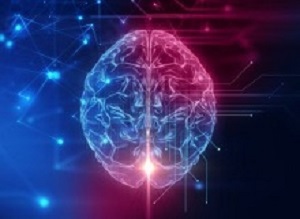 A small Tel Aviv University study suggests a novel way of treating the affected areas of the brain that apparently cause freezing of gait,using trans-cranial direct-current electrical stimulation to 'significantly' ameliorate the condition.
A small Tel Aviv University study suggests a novel way of treating the affected areas of the brain that apparently cause freezing of gait,using trans-cranial direct-current electrical stimulation to 'significantly' ameliorate the condition.
"The effects of multi-target simultaneous stimulation of motor and cognitive networks demand investigation," says Professor Jeffrey Hausdorff of TAU's Sackler School of Medicine and the Centre for Movement Disorders at Tel Aviv Medical Centre, who led the research for the study.
Research for the study was also conducted by TAU neuroscience doctoral student Moria Dagan; Professor Nir Giladi of TAU's Sackler School of Medicine and Tel Aviv Medical Centre; Dr Tali Herman of Tel Aviv Medical Centre; and a team of researchers from Harvard Medical School led by Dr Brad Manor and Professor Lew Lipsitz.
The team of scientists examined 20 Parkinson's disease patients, who often experience freezing of gait. The patients received 20 minutes of trans-cranial direct current stimulation via a cap that the subjects wore on their head on three separate visits. Trans-cranial direct current stimulation targeted the primary motor cortex and left dorso-lateral prefrontal cortex simultaneously; the primary motor cortex only; or underwent "sham," placebo stimulation, where the subject feels some tingling sensation, but the amount of stimulation is negligible.
Before and after each round of stimulation, the participants completed a test that provoked freezing of gait, a static and dynamic mobility test (known as "Timed Up and Go"), gait assessment, and a cognitive test for processing speed, selective attention and inhibition control (Stroop test).
"What we found was quite encouraging," says Hausdorff. "The participants' walking improved after simultaneous stimulation of the primary motor cortex and left dorsolateral prefrontal cortex, but not after primary motor cortex only or sham stimulation. The results of the study reveal that transcranial direct current stimulation designed to simultaneously target motor and cognitive regions apparently induces immediate aftereffects in the brain that translate into reduced freezing of gait and improvements in executive function and mobility."
After 20 minutes of multi-site stimulation, the patients' freezing of gait was reduced and mobility and cognition improved – more than that seen after stimulation of primary motor cortex only or through sham simulation.
"In other words, a larger, more positive effect is obtained when both motor and cognitive areas are targeted," Hausdorff concludes. "When thinking about treatments for freezing of gait, it is important to target both motor and cognitive functions.
"Even among patients with advanced Parkinson's disease and freezing of gait, it is apparently possible to improve brain function via non-invasive brain stimulation, at least in the short-term, and this has positive, functional consequences."
Together with their collaborators at Harvard Medical School, the TAU-TAMC team is currently conducting a randomised controlled trial to determine the long-term benefits of this multi-site stimulation on freezing of gait and related symptoms.
Abstract
Background: Recent findings suggest that transcranial direct current stimulation of the primary motor cortex may ameliorate freezing of gait. However, the effects of multitarget simultaneous stimulation of motor and cognitive networks are mostly unknown. The objective of this study was to evaluate the effects of multitarget transcranial direct current stimulation of the primary motor cortex and left dorsolateral prefrontal cortex on freezing of gait and related outcomes.
Methods: Twenty patients with Parkinson's disease and freezing of gait received 20 minutes of transcranial direct current stimulation on 3 separate visits. Transcranial direct current stimulation targeted the primary motor cortex and left dorsolateral prefrontal cortex simultaneously, primary motor cortex only, or sham stimulation (order randomized and double-blinded assessments). Participants completed a freezing of gait-provoking test, the Timed Up and Go, and the Stroop test before and after each transcranial direct current stimulation session.
Results: Performance on the freezing of gait-provoking test (P = 0.010), Timed Up and Go (P = 0.006), and the Stroop test (P = 0.016) improved after simultaneous stimulation of the primary motor cortex and left dorsolateral prefrontal cortex, but not after primary motor cortex only or sham stimulation.
Conclusions: Transcranial direct current stimulation designed to simultaneously target motor and cognitive regions apparently induces immediate aftereffects in the brain that translate into reduced freezing of gait and improvements in executive function and mobility. © 2018 International Parkinson and Movement Disorder Society
Authors
Moria Dagan, Talia Herman, Rachel Harrison, Junhong Zhou, Nir Giladi, Giulio Ruffini, Brad Manor, Jeffrey M Hausdorff
[link url="https://www.aftau.org/weblog-medicine–health?&storyid4704=2383&ncs4704=3"]American Friends of Tel Aviv University material[/link]
[link url="http://onlinelibrary.wiley.com/doi/10.1002/mds.27300/abstract"]Movement Disorders abstract[/link]
